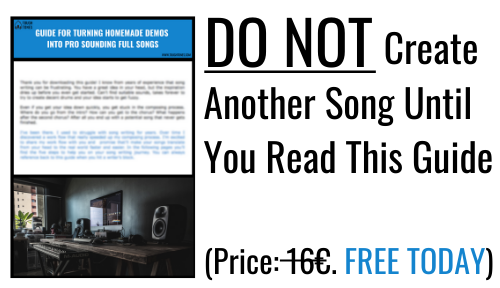How to Mix Programmed Midi Drums?
Midi drums are just the best thing. They allow you to make music even if you don’t have drums or don’t know how to play them. Drums are the backbone of any genre really, that’s why they’re so important. It doesn’t really matter if they’re programmed midi drums or the real thing.
Many struggle to get decent sounds out of their drum plugins, let alone mixing them. Have no fear my friend, as in this video I’m showing you my workflow of mixing midi drums just the way I’m usually approaching them – without leaving anything out. That’s why this is a bit longer video than thus far. Without further ado let’s dive right in.
Mixing Programmed Midi Drums
The first thing to do is to separate drums into separate individual tracks. You want to be able to process the drums drum by drum rather than as a whole. This way you’ll be mixing them like real drums and you’ll have more flexibility. In the video you see how the separation is done in Kontakt player with GetGood Drums, but in case you’re using a different platform / drum plugin, it’s going to be a similar approach.
The second thing is to EQ the drums. I’m trying to brighten up the drums as well as get rid of some of the harsh, nasty or muddy frequencies. You can see me doing pretty heavy boosts, but don’t let your eyes fool you. Trust your ears. If you’re someone that has been told only to cut instead of boost, this might come as a bit of a shock. Remember to match the level so you’re not just making your tracks louder.
The next step is to compress the drums. As with programmed drums the velocity is pretty consistent, the point of compression is to gain attack and energy. I’m starting with presets and then fiddling with attack, release, threshold, make up gain until it sounds like I want it to.
After EQ and compression I usually do the parallel compressing. This is done by sending copies of drums to a aux channel, compressing the sh*t out of the drums and then blending the compressed signal into the drums.
In the end I use a bit of saturation to get some fatness into the snare. You’ll also see me using two different reverbs (gated and plate) to stretch the snare just a bit and giving it some length and size.
Summary
Hopefully you gained some insights of how to approach mixing programmed midi drums. The biggest thing is to route the individual drums into the separate tracks. From there on out it’s like mixing real drums.
If there’s anything you want me to cover in the future videos let me know. Send me an email or leave a comment below. Ask if there’s anything unclear or if I left something out. Cheers!

1 thought on “How to Mix Programmed Midi Drums?”